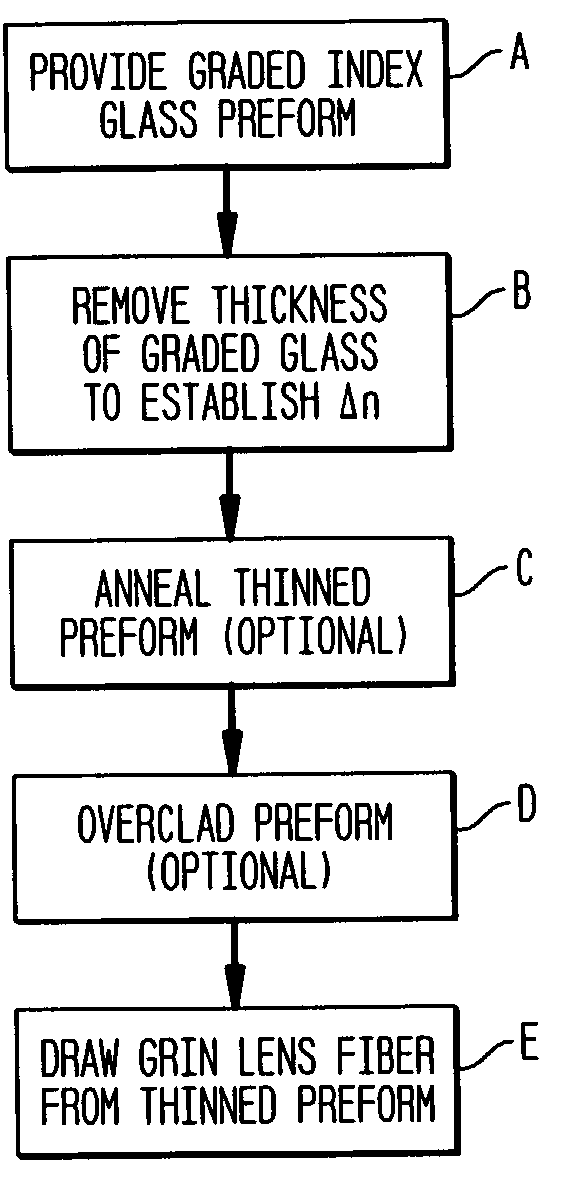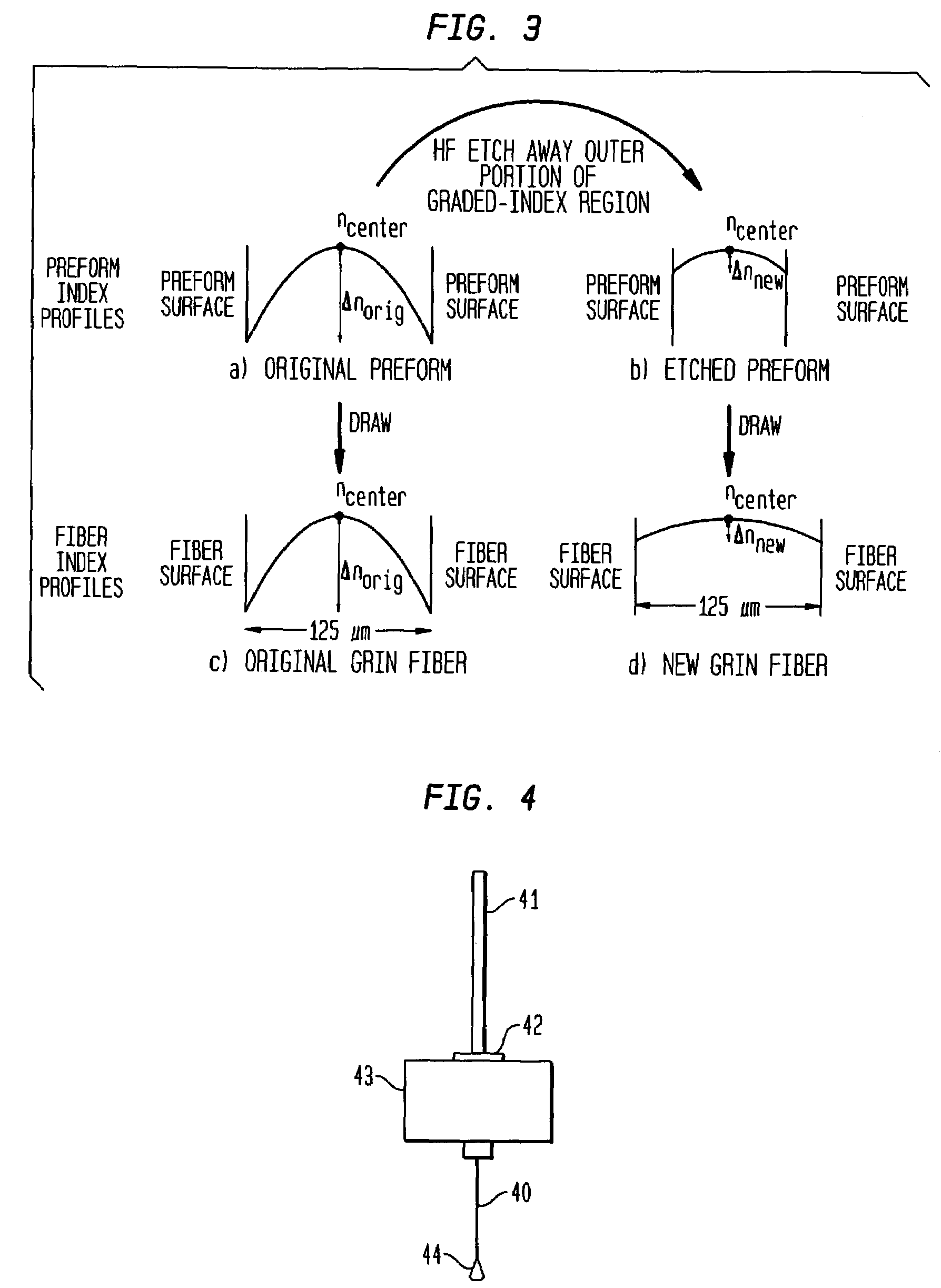Method of fabricating graded-index optical fiber lenses
a technology of optical fiber and graded index, which is applied in the field of making graded index optical fiber lenses, can solve the problems of difficult control of the refractive index profile of the grin lens fiber, the difficulty of fabricating grin fiber lenses having precisely defined lens characteristics, and the difficulty of changing the fiber profile by changing the composition profile of deposited glass, so as to reduce the outer diameter and minimize the ripple
- Summary
- Abstract
- Description
- Claims
- Application Information
AI Technical Summary
Benefits of technology
Problems solved by technology
Method used
Image
Examples
example
[0041]To illustrate the present invention we describe a specific example in which a preform originally intended for high-bandwidth multimode telecommunication optical fiber was used instead as a precursor for fabricating a GRIN lens. This graded-index perform was fabricated by MCVD and was also overclad with an additional, constant refractive index, pure silica tube. The MCVD substrate tube was pure silica and also exhibited a constant refractive index. The graded-index region was fabricated using the well known MCVD process by depositing silica soot with increasing germania content so that when the perform was collapsed into a solid rod, the refractive index of the deposited glass varied inversely with the square of radial position. The maximum refractive index was in the center of the fiber and was 1.15% higher than that of the pure silica regions. The resulting refractive index (at 632.8 nm) of the preform's graded-index region was well approximated by the relation: n(r)=1.4748-...
PUM
| Property | Measurement | Unit |
|---|---|---|
| Thickness | aaaaa | aaaaa |
| Thickness | aaaaa | aaaaa |
| Diameter | aaaaa | aaaaa |
Abstract
Description
Claims
Application Information
 Login to View More
Login to View More - R&D
- Intellectual Property
- Life Sciences
- Materials
- Tech Scout
- Unparalleled Data Quality
- Higher Quality Content
- 60% Fewer Hallucinations
Browse by: Latest US Patents, China's latest patents, Technical Efficacy Thesaurus, Application Domain, Technology Topic, Popular Technical Reports.
© 2025 PatSnap. All rights reserved.Legal|Privacy policy|Modern Slavery Act Transparency Statement|Sitemap|About US| Contact US: help@patsnap.com



